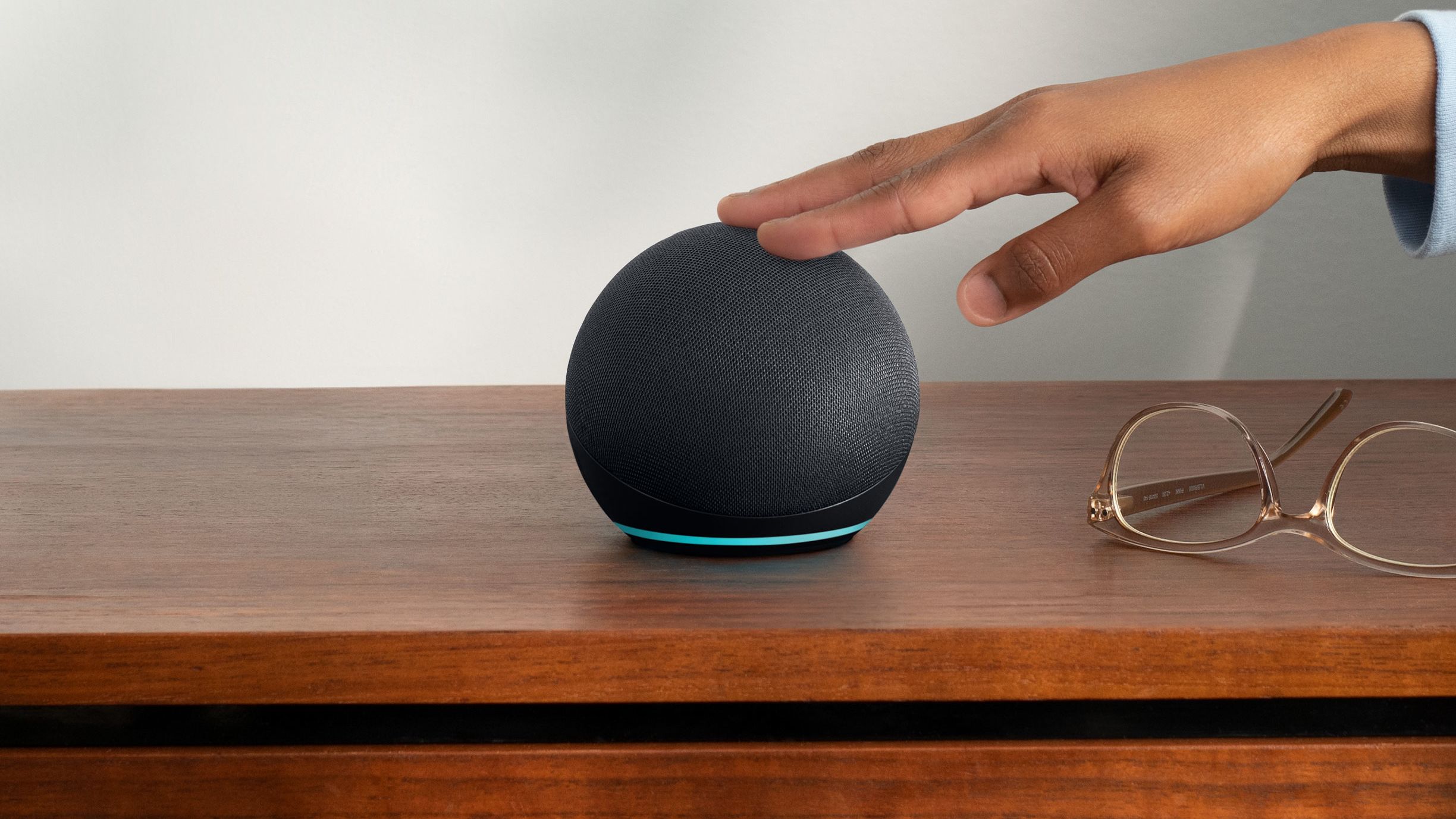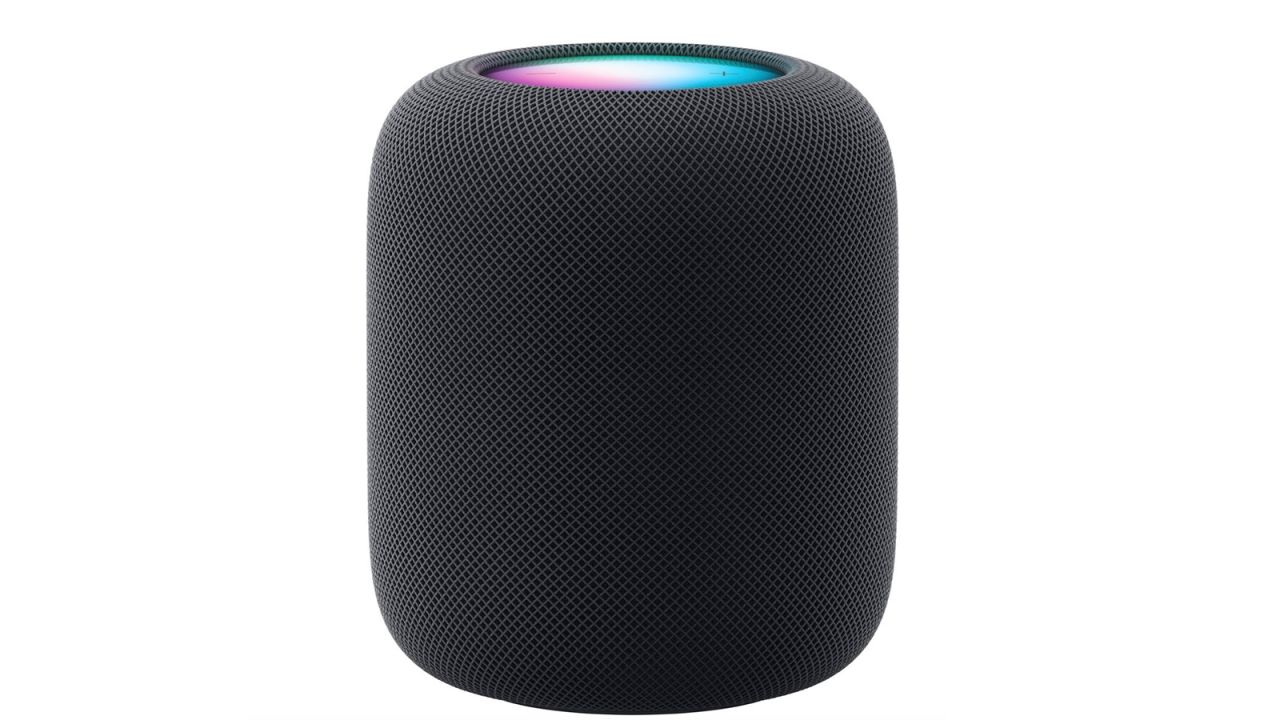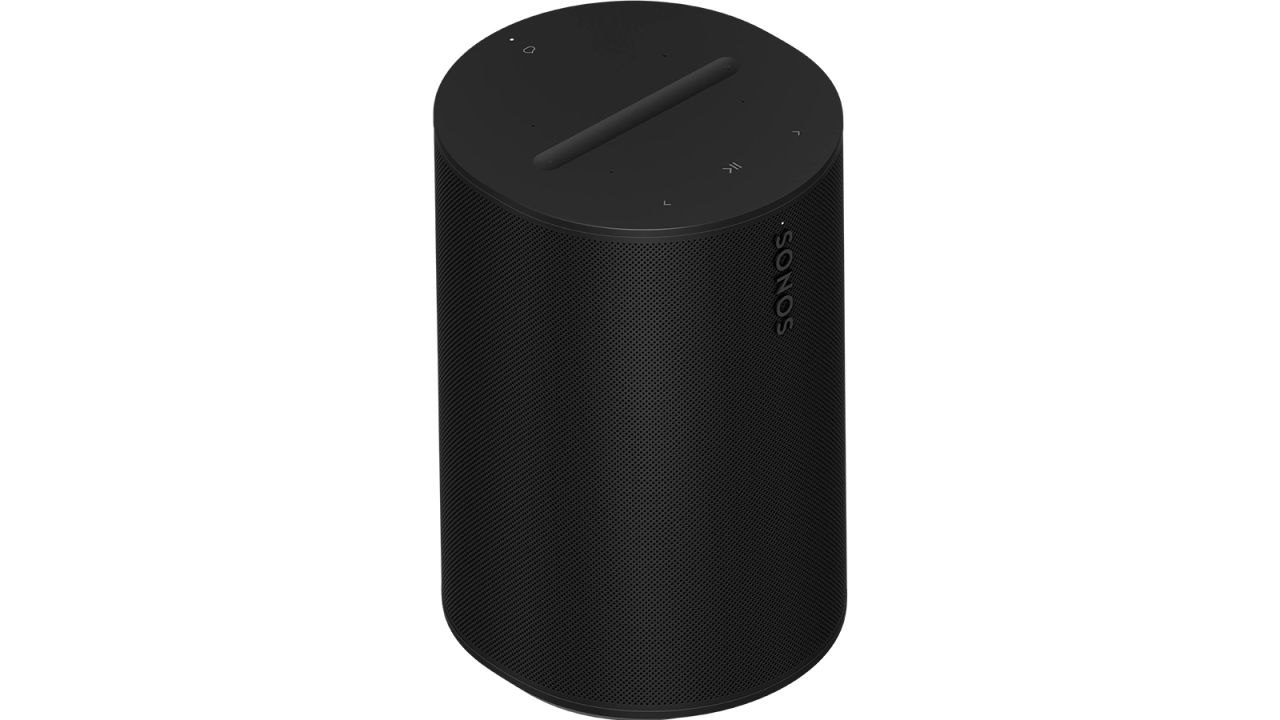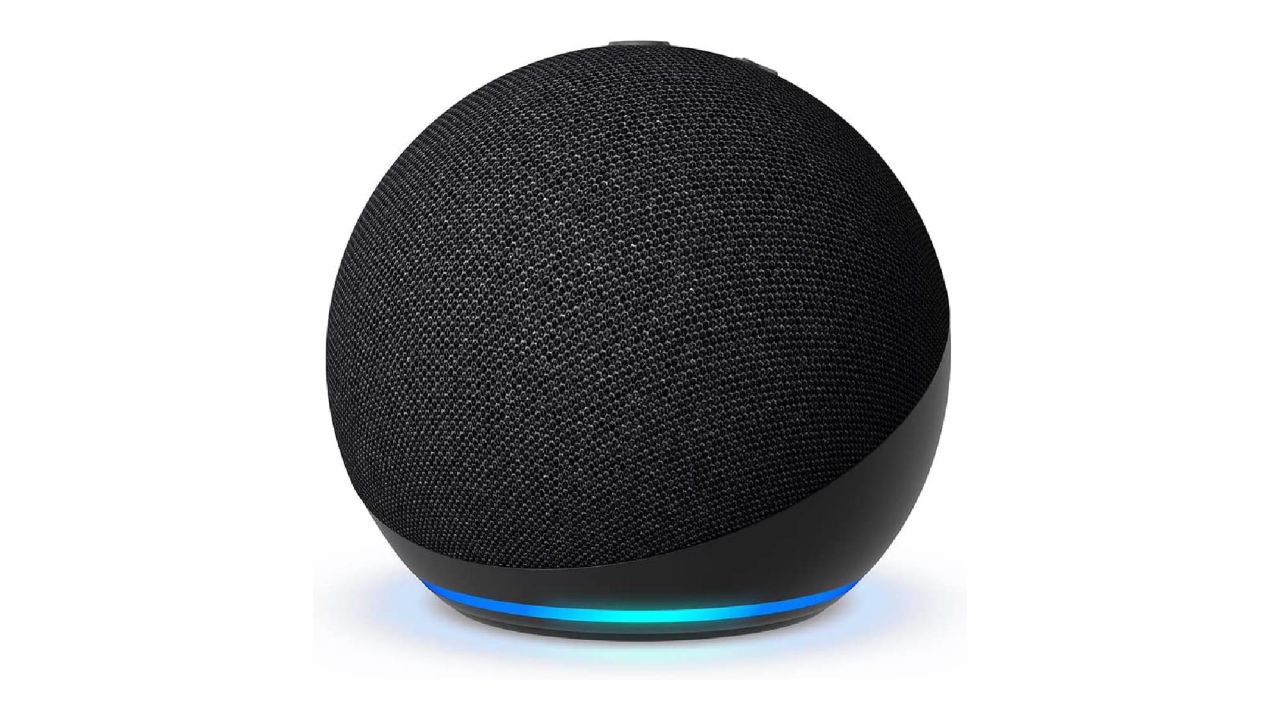Smart speakers go beyond just playing music. They provide control over your other home devices, answer queries and connect you with friends and family — and the best ones should execute all those tasks equally well. We’ve been testing smart speakers for years, reviewing each new iteration as it hits the market, and we’ve whittled the long list of smart speakers down to the best four:
The fourth-gen Echo pushes out a soundstage that’s unmatched at its price point. Alexa is constantly getting smarter and giving you more control over your information as well.
The second-gen HomePod is a great pick for Apple users who don't already own the previous model, offering lots of smarts and room-filling sound for a good price. The new version updates support for smart home devices, includes new sensors and features, and costs less than the original.
The Era 100 produces a bigger sound than the Sonos One, our previous best sounding pick, without increasing the size much and delivers impressive bass for a small speaker. It adds Bluetooth and the option for external sources through a line-in adapter, but at a higher cost.
The latest Amazon Echo Dot improves on our favorite budget smart speaker with better audio, Wi-Fi extension capabilities and a better LED display on the clock model.
Best smart speaker overall: Amazon Echo (4th Gen)
$100 at Amazon
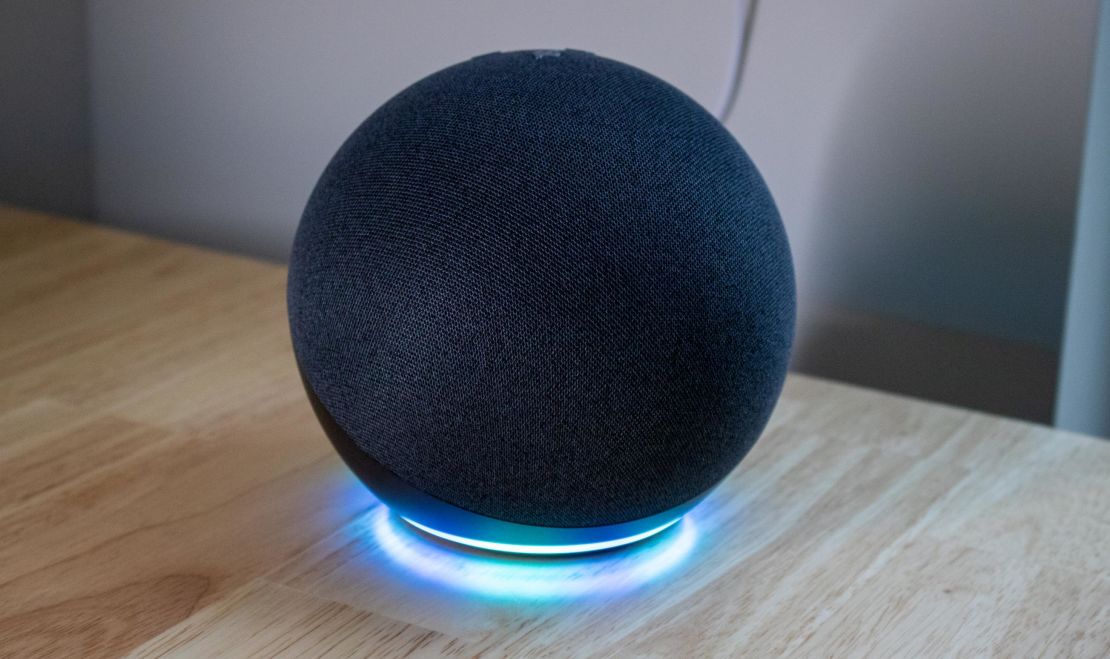
The fourth-gen Echo really embodies all that a smart speaker can and should be. It plays music clearly and richly, gives you easy access to information and can control your smart home devices.
First off, we were really jiving with the futuristic ball shape during our tests of the Echo. Not only does it take up less space in terms of height, but it adds a casually futuristic touch to a shelf or countertop. Our favorite part of the design is that Amazon moved Alexa’s light ring from the top to the bottom, but in use it provides more function: The LEDs reflect off the surface that the device is on, making it easier to see the colors.
The fourth-gen Echo pushes sound out of the front (and front sides) courtesy of two tweeters and a woofer. It represents the largest soundstage we’ve ever heard in a core Echo speaker. And you don’t have to be shy about bumping up the volume; the Echo gets room-filling loud, more so than the Nest Audio and HomePod Mini, though the HomePod Mini delivers more clarity at higher volumes.
Amazon also upped the audio quality across all tones — low, mid, high and bass — by adding in room-reading technology that can auto-mix tracks based on the Echo’s surroundings. It will detect how close it is to walls, for instance, and analyze in real time to make adjustments. (You can still make manual adjustments via an equalizer in the Alexa app.)
The Echo also shone because of Alexa, who’s gotten smarter and quicker; in just six years her response time has nearly doubled. Alexa and the Google Assistant are still pretty much neck and neck (with Siri a bit further behind), but Alexa has especially grown in the realms of handling nuances of the English language and recognizing different voices. For instance, Alexa on the Echo had no trouble detecting whether it was this tester speaking or another household member.
It’s also easy to catch Alexa’s attention, as the fourth-gen Echo boasts six built-in microphones. With modest volume levels, we never had to raise our voice, though we did have to at times with the volume at its maximum.
Alexa isn’t just for random information, either, but can also control the smart home. The fourth-gen Echo contains the core connectivity you need (Wi-Fi and Bluetooth), and tosses in Zigbee and Amazon Sidewalk as well — two smart home standards that make it more seamless to connect various devices. Essentially, when you buy a Zigbee smart bulb or plug, you won’t need to purchase a hub also, as the fourth-gen Echo can connect to it and get it set up for use. It makes the fourth-gen Echo a more all-in-one device than most other speakers.
Amazon has also been adding in more control to ensure privacy. Via the Alexa app for Android and iOS, you can wipe your history and adjust settings to make you more comfortable with having Alexa in your home. Plus, you can always mute the microphone to cut her off from listening for the wake word.
At $100, the fourth-gen Echo delivers robust audio performance, provides access to Alexa and can power the smart home in a futuristic build.
Best speaker for Apple users: HomePod (2nd Gen)
$300 at Best Buy
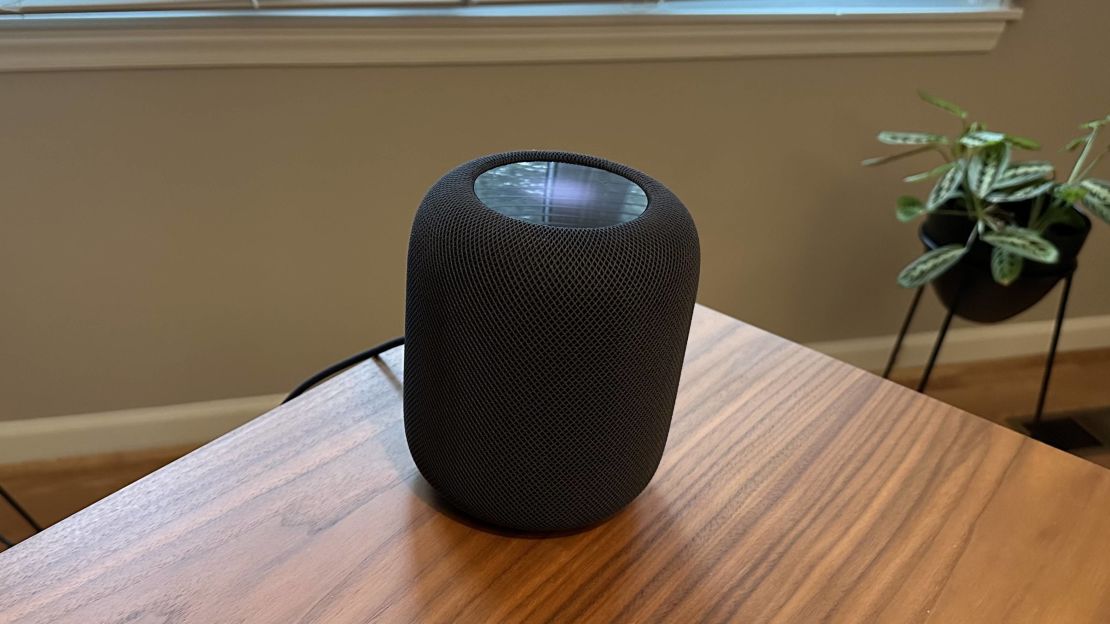
At first glance, it’s hard to see much difference between the new HomePod and the first generation version. The new one is a little smaller and has a few design differences, but otherwise looks very similar.
Inside, the second-generation HomePod has fewer drivers than the first-generation model — five on the new one versus seven on the original — and yet it actually improves on the overall sound. The new HomePod has a better balance of bass, treble and midrange tones; the original HomePod was very bass-heavy.
Its design allows for sound to project 360 degrees, and it features room correction software that will adjust the audio to sound best in the space you put it in. In a head-to-head comparison with the original HomePod, the first-generation model sounded muddy and less vibrant. There’s no comparison between the HomePod Mini and the HomePod; the larger speaker sounds much bigger and better.
The second-generation model adds support for Matter, the new smart home standard. That means you can use it as a hub for controlling non-Apple devices and it should be ready for new smart products as they arrive. Matter is open-source and meant to promote interoperability; compatible devices work with Alexa and Google Assistant as well as Siri.
It isn’t for everyone. If you don’t have an iPhone or iPad, or you mainly use Spotify, you’re better off with a Sonos One. And the HomePod isn’t portable, which may limit its appeal to you.
But if those things don’t put you off, the HomePod will make Siri more useful to you and brings better sound to your home.
Best sounding smart speaker: Sonos Era 100
$249 at Sonos
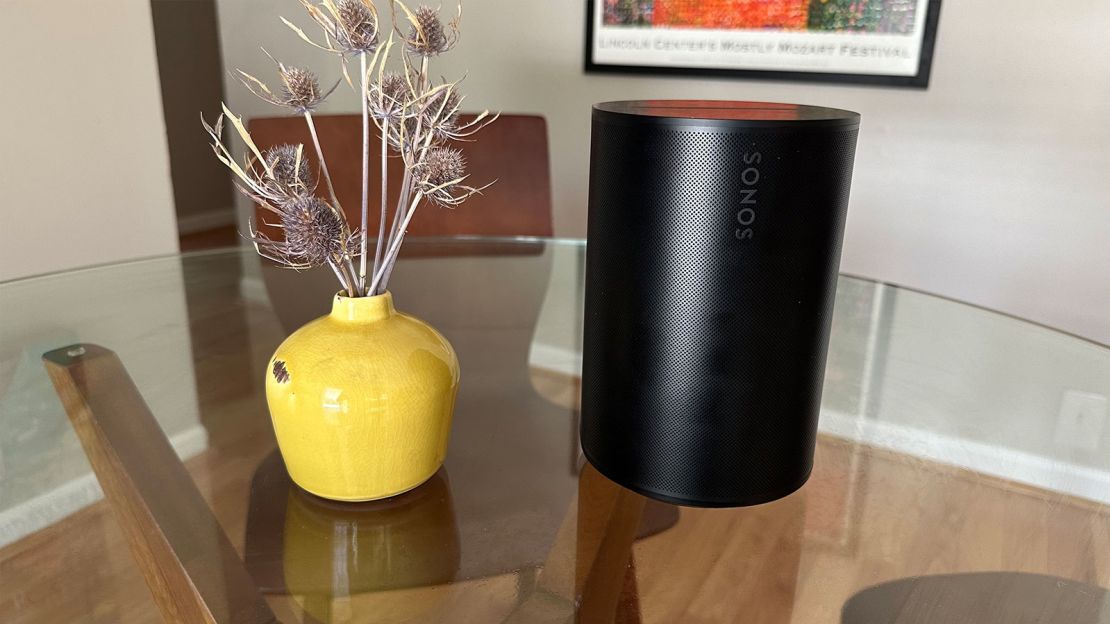
The Sonos One has long been our pick for the best-sounding smart speaker, and the Era 100 improves on it in every way. The Era 100 has a lot more bass than the One, and it features a wider sound, thanks to having two tweeters.
Listening to “Cracker Island” by Gorillaz, the bass on the Era 100 boomed, and the vocals were clear in the mix. The One produced far less bass on the same song, and didn’t spread the sound as widely. Ezra Collective’s “Life Goes On” showed off the Era 100’s balance between bass and vocals; the horns sounded warm and punchy. The chorus on SZA’s “Kill Bill” made good use of the two tweeters, producing a wide sound with good separation in the stereo channels. The stereo effect of the Era 100 isn’t as pronounced as with two separate speakers, though.
The Era 100 comes with a wave of new features like Bluetooth, with easy connection and control through the Sonos app, a USB-C port for adapter connection, and Trueplay, Sonos’ room correction software. Like with previous Sonos One, you can group two Era 100s together to create a left-right stereo pair. You can also use them as rear speakers with an Arc, Beam or Ray soundbar and a subwoofer for a 5.1 system.
Sonos has also tweaked the controls for the Era 100, too. The best addition is the volume slider: a trench across the top where you can slide a finger to increase or decrease sound. It’s more tactile than tapping plus and minus signs to change volume, and it adds more control. The Era 100 includes microphones so you can use your voice to control it (and for room correction). But if you don’t want the speaker listening, there’s a touch-sensitive button on top that mutes the microphones, and there’s a switch on the back that completely turns them off.
All these upgrades come at a cost though. At $249, the Era 100 costs $30 more than the One. And the One used to cost $199. You get more for your money, but it is creeping out of the affordable range for many people. And while Sonos has added a lot to the Era 100, it also took away Google Assistant. You can still use Amazon Alexa or Sonos Voice Control for hands-free control. Sonos Voice Control is limited, though — it can only control the speaker, and might frequently misunderstand what you ask it to do.
Overall, the Era 100 is definitely a better speaker, improving on our previous best-sounding pick in nearly every way. And for those who are new to Sonos or only have one of their soundbars, the Era 100 is a great place to start — or build on — your system.
Best budget smart speaker: Amazon Echo Dot (5th Gen)
$60 at Amazon
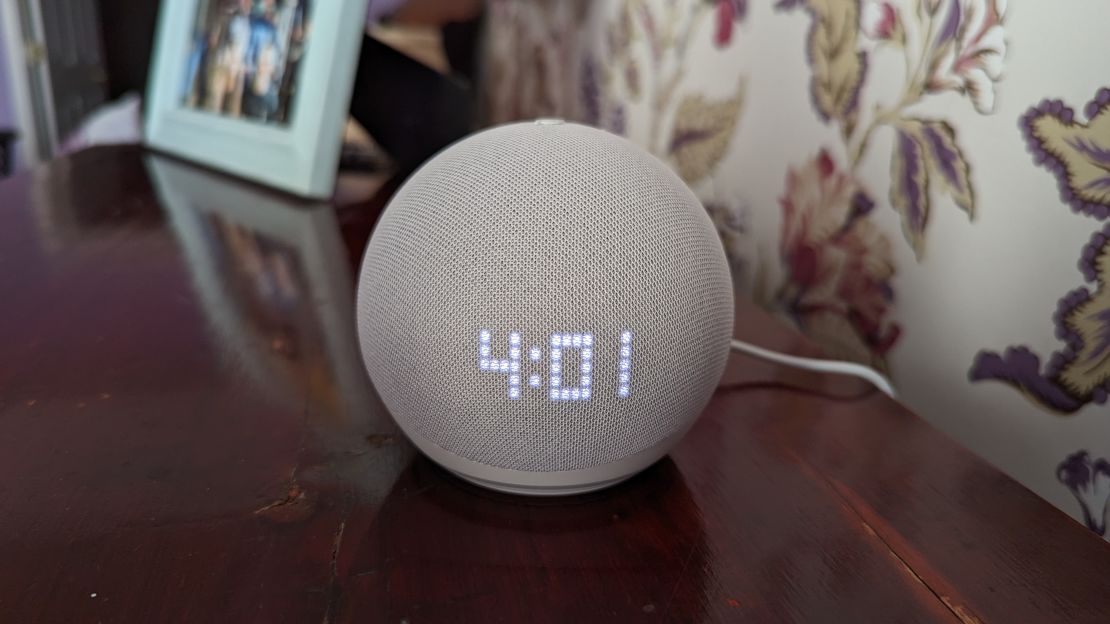
At first glance, the Echo Dot with Clock looks a lot like the fourth-gen model, with fabric covering the top half of the sphere-shaped device, while the bottom is wrapped in matte plastic. There are four slightly raised controls on the top for volume, mute and action — all of which can be used to trigger Alexa — and it comes in muted Charcoal and Glacier White colors.
But look closely and you’ll notice that the LED display on the front now has a brighter, scrolling display so it can show things like the time, the weather, the music you’re listening to and all kinds of helpful information.
The Echo Dot’s also features two new sensors: one for temperature and an accelerometer for using gestures to interact with the speaker. In addition to voice control, you can tap the top of the Dot to do things like play and pause music, and snooze your alarm or a timer. As for the temperature sensor, yes, it tells you the temperature of whatever room it lives in. But it turned out this was more useful than it sounds, particularly if you have Alexa Routines set up in your home. For instance, this sensor can interact with other smart home devices to turn the overhead fan on or off when the room hits a certain temperature.
As for sound performance, the Echo Dot won’t give you the rich, crisp sound of a more expensive piece of audio equipment, but it sounds pretty darn good for a small Bluetooth speaker. The updated fifth-gen model uses a larger driver for clearer vocals and deeper bass.
If you’re in the market for a new smart speaker or you’re using a much older Echo smart home device, the Echo Dot with Clock is an affordable way to add smart functionality and music to any room in the house.
How we tested
Before deciding on our testing pool, we spent time crafting a testing methodology and rubric for rating smart speakers. Given the players in the space and main use cases of these devices, we focused on three main areas: audio quality, convenience and the smart assistants.
Audio quality was the largest category, both in points and subsections, allowing us to look at an overall mix while also examining tones across the spectrum and the clarity within each. We had a range of test tracks that we played on all speakers at varying volumes and in different spaces.
Convenience was top of mind throughout the testing process as, at the end of the day, a smart speaker should be helpful and not hinder experiences. You want to be able to get the assistant’s attention with relative ease (having the microphones accurately pick up the request and for the processing to be done correctly). We also took a look at privacy on each one and settings that the user could enable or disable.
Convenience also carried over into its smart home capabilities and how these smart speakers can integrate. Do they offer extra connectivity to help get devices online? Can they make minute adjustments on individually connected gadgets? Can we group gadgets together? Do they support out-of-home control? These were just a few of the questions we posed and answered.
In terms of design, we looked at the materials used and how those both fit into the home along with compatible devices. Some opt for a classic speaker look, while devices like the HomePod Mini or 2020 Echo’s embrace the spherical design language. Nest Audio looks like a small pillow — we don’t recommend sleeping on it, though. We looked for the expected controls along with the all-important ability to mute microphones.
After unboxing the smart speakers, we tested the setup and how intuitive it was to complete. Did you need to sign up for an account? How long did it take to set up? We also looked at whether each device had a warranty and, if so, for how long.
Other smart speakers we tested
Amazon Echo Pop
$40 at Amazon
The Echo Pop is the newest addition to the Amazon Echo universe, and it lives up to its name. Not only do you get a cute, colorful smart speaker that will accent most decor, but it also doubles as a Matter controller. But, it has its limitations and only really makes sense for occasional Alexa use — setting alarms, answering basic questions and controlling smart lights or plugs — in secondary rooms where sound quality isn’t a primary factor.
If you’re already a fervent Alexa fan, the Pop is a good upgrade for older Echo models like the third generation or older. If you’re new to Alexa, on the other hand, the Pop is a great toe-dip into the ecosystem (Echo-system?). But anyone wanting better sound or smart home integration should spend a little extra on a fourth- or fifth-gen Echo Dot for dramatically superior performance that still fits into secondary spaces well.
Sonos One
$219 at Sonos
Our previous pick for best sounding smart speaker, the Sonos One is the Goldilocks of smart speakers for sound quality enthusiasts. It’s not exorbitantly expensive yet it still packs the critical hardware (two amplifiers, a woofer and a tweeter) to deliver robust sound. It’s a great choice if you want an assistant-agnostic smart speaker that focuses on bold and clear audio. The Sonos One is bested by the new Sonos Era 100 which features even an more robust and wider sound experience.
Apple HomePod Mini
$100 at Best Buy
Our previous pick for best speaker for Apple users, the Homepod Mini can serve as the centerpiece to your smart home system. It not only has the technology inside give you out-of-home control for door locks, cameras, sensors and countless other gizmos, but Siri is also a lot better at fielding these requests. The HomePod Mini also has great sound; getting loud without muddling audio quality. No snapping, crackling or popping hindered whatever track we chose to play. The only downside: it’s not an option for anyone without an iPhone.
Echo Studio
$200 $175 at Amazon
The Echo Studio is the most expensive Echo, but it’s also the best-sounding one thanks to its almost delirious amount of speakers. But a not-so-sleek build, too-steep price and limited support for 3D music kept it from getting a top pick. We feel, for half the price, the fourth-gen Echo is a much better buy.
Apple HomePod
$299 at Apple
Apple’s $299 HomePod focuses squarely on delivering the best sound possible. It has seven tweeters, a larger woofer and multiple amplifiers that all push out sound, alongside a custom chip to mix it in real time. But it lacks as a smart speaker, with no extra connectivity features and a price that pushes it far from affordability.
Nest Audio
$100 at B&H Photo Video
As we noted in our full review, the Nest Audio features a nice design that presents itself with Google DNA front and center. It also delivers deep integration with Google, something Android users will appreciate. Alexa is just a smarter assistant as a whole, and sound quality was lacking with this smart speaker. It delivered on clarity but not in its ability to get loud or fill a room.
Nest Mini
$50 at B&H Photo Video
The donut-sized Nest Mini was neck and neck with the Echo Dot — however, sound quality and speed left us wanting more. Audio was clear at lower volumes, but the Nest Mini didn’t achieve loud volumes and, at its maximum volume, it introduced crackling.
Read more from CNN Underscored’s hands-on testing:
